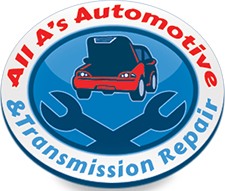Auto Inspection Triangle Part 1 | Overview

 Many mechanics and auto shops in the automotive repair and service industry believe in the Auto Inspection Triangle concept. This four-part blog series will explore how your vehicle’s brakes, steering, tires, and suspension system tie into the Auto Inspection Triangle. We will discuss the various auto components that contribute to your vehicle’s stability, steering and stopping. And finally, we will discover the best ways to achieve the highest level of vehicle safety and performance through servicing these interconnected components.
Many mechanics and auto shops in the automotive repair and service industry believe in the Auto Inspection Triangle concept. This four-part blog series will explore how your vehicle’s brakes, steering, tires, and suspension system tie into the Auto Inspection Triangle. We will discuss the various auto components that contribute to your vehicle’s stability, steering and stopping. And finally, we will discover the best ways to achieve the highest level of vehicle safety and performance through servicing these interconnected components.
What Is An Auto Inspection Triangle?
Do you remember the equilateral triangle from school? All three sides or legs of the triangle are the same length and have the same value. An Auto Inspection Triangle focuses on three areas of your vehicle that work together equally. The legs of the Auto Inspection Triangle are called stability, steering, and stopping. They help the driver control the automobile while on the road.
How Does It Work?
The Auto Inspection Triangle works on the idea that all three categories (Stability, Steering, and Stopping) are interlocked together and work in unison. During this comprehensive inspection, your service technician checks all the interconnected components within the legs of the triangle.
For example, your vehicle isn’t stopping like it used to. Instead of simply inspecting the brakes, the technician also reviews the shocks, struts, and tires. It gives a wider view of the possible causes and can prevent minor problems from growing into more extensive repairs.
Remember, a single worn or damaged part can negatively affect your vehicle’s overall safety. Therefore, ask your service technician about the Auto Inspection Triangle each time you bring your vehicle in for tires, brakes, suspension, or steering services.
Stability
The Stability side of the Auto Inspection Triangle focuses on the components that work together to increase traction and reduce weight transfer. Your vehicle utilizes the shocks, struts, and tires together as a team to achieve stability. When one or more of these components becomes worn or damaged, the Stability leg of the triangle is compromised. So your technician should perform routine maintenance on your vehicle’s suspension system and tires for reliable stability.
Steering
The Steering side of the Auto Inspection Triangle focuses on the components that work together to distribute your car’s weight evenly over all four tires. Your vehicle uses the shocks and struts in the suspension system to improve steering and handling during turns. Problems with the suspension system or tires can create unsafe driving conditions. For this reason, regular inspections of your vehicle’s shocks, struts, wheels, and tires can catch worn parts before they cause steering issues.
Stopping
The Stopping side of the Auto Inspection Triangle focuses on the components that work together to help your vehicle stop. Shocks, struts, tires, and brakes work together to reduce the rate of weight transfer and improve tire traction on the road. Worn or damaged automotive components can significantly reduce your vehicle’s stopping ability and cause traction issues. Follow your owner’s manual recommendations for service intervals on brake components, tires, and the suspension system.
Why is It Important?
An Auto Inspection Triangle includes ALL the essential system components that control stability, steering, and stopping. The technician inspects the complete system, not just the individual parts. The concept of the Auto Inspection Triangle is like looking at the whole body to figure out why your foot hurts. The Auto Inspection Triangle is a valuable tool for motorists and auto technicians alike.
Reliable Auto Shop In Midland, MI
All A’s Automotive & Transmission Repair is an auto shop serving the greater Midland, MI. We offer complete automotive services for foreign and domestic automobiles. When your vehicle needs a diagnostic service to improve performance or address safety issues, our technicians will work hard to find the right solution for your needs. Give us a call at (989) 631-4672 or make your appointment online.
Coming Soon – Auto Inspection Triangle: Stability Part 2
In part 2 of this blog series, we will focus on the Stability side of the Auto Inspection Triangle. Including the specific components that affect your vehicle’s stability and warning signs to watch out for. Plus, we will cover how you and your service technician can help keep your automobile safely on the road.
Posted in: Brakes, Tires & Wheels
Leave a Comment (0) ↓
